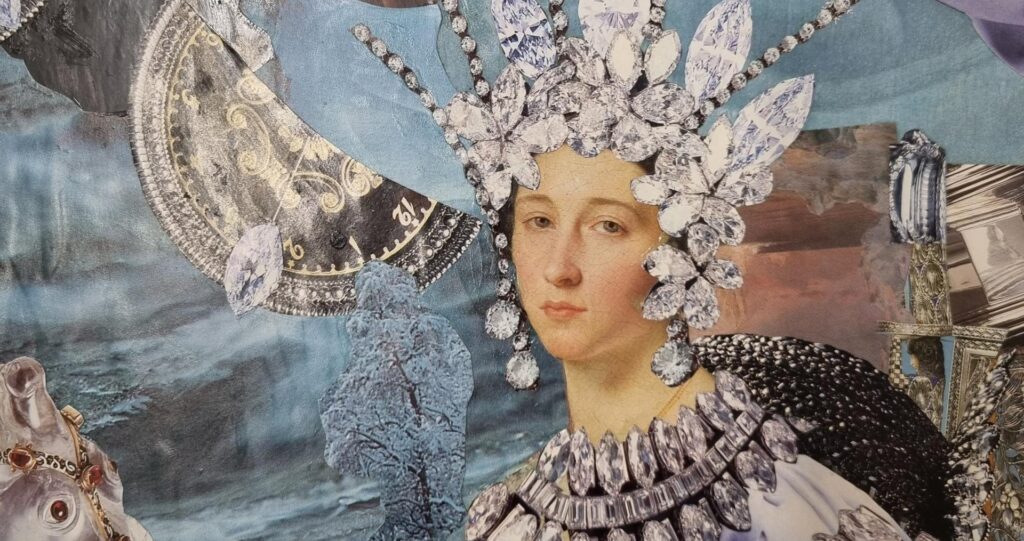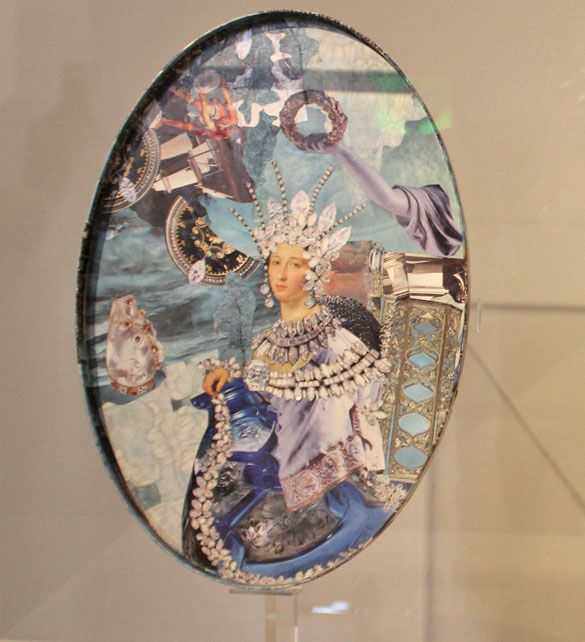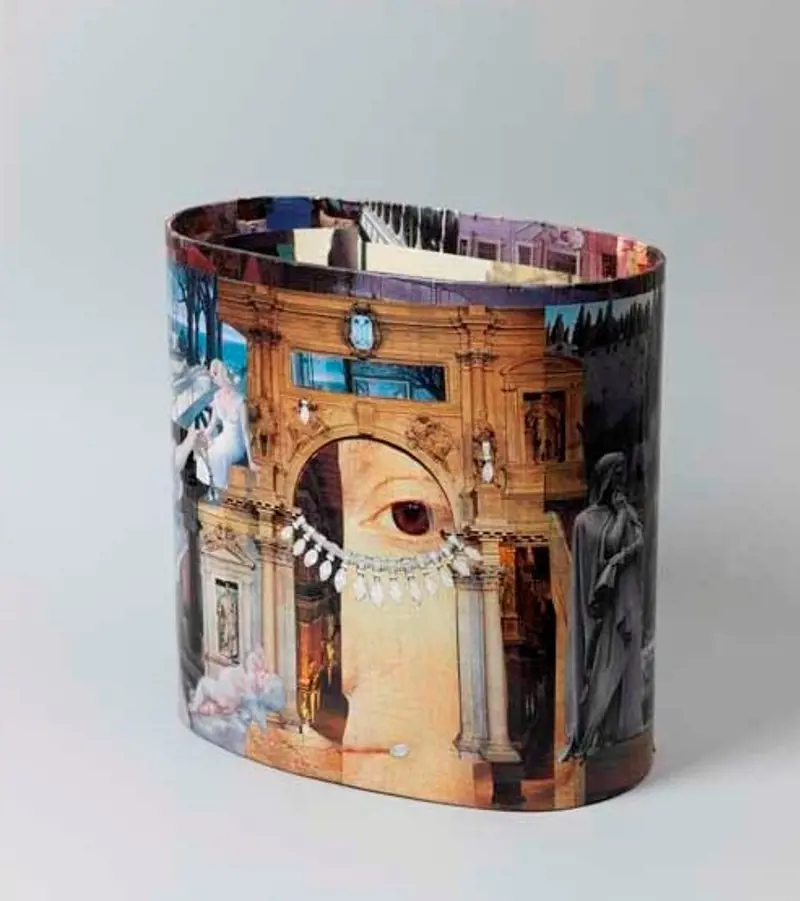
This is a detail of a decoupage panel made by HM Margrethe II, now-former Queen of Denmark. It was the header image of Margrethe II of Denmark, Artist-Queen an exhibition of 60 artworks by the queen at the Musée Henri Martin in Cahors, in southern France. The queen’s late husband Prince Henrik was a French count whose family is from the region—people from Cahors are called Cadurciens—and the royal family owns a chateau and vineyard nearby.

The queen has been making art at least since the 1970s, and she is quite active in several mediums, devoting at least one day a week to her practice. She just abdicated her day job, so perhaps she is in the studio even more now.
Margrethe’s art is in the news because a painting she made in 1988, the year she officially began exhibiting, is coming up for auction. This is apparently quite rare, because The Queen doesn’t sell work; sometimes she gives it as gifts. [This painting is being sold by the family of a former courtier.] Her paintings are probably never as interesting as the moment in which they are being made.

At least they’re not as interesting as this idea of The Queen using her art objects either as gifts or decorations. The website for the Danish Royal Family has a decent amount of information about her art practice. The decoupage items she makes by gluing images cut out from magazines decorate her palaces, hunting lodges, chateau, and yacht. All the guestrooms at Christian VII’s palace at Amalienborg, for example, “are furnished with a wastepaper basket decorated with The Queen’s découpage.” Decoupage is a very active process which benefits from a sense of composition and industriousness, both of which The Queen seems to have in abundance. The Queen decoupages in the opening credits of De Wilde Svaner, the 2009 film adaptation of a Hans Christian Andersen tale for which she created the scenery and costumes.

The Queen’s embroidery practice is very similar. She designs her own patterns or even stitches freely, without patterns, as she makes personal and household objects and gifts for family members, friends, and privileged subjects. Chairs
In one sense, this personal creative exercise, crafting nicknacks for yourself, your home, and your friends, feels like a carving out of a private space, a practice of respite and normalcy. But it is also very much the opposite: individual, domestic labor so time-intensive it gets stripped of any economic justification, and so falls/is elevated to emotional and relational tokens of interpersonal exchange, deployed by a monarch in service of the preservation and reinforcing of that monarchy’s power. The beloved queen of the people leaving her personal marks across the vast properties and resources at her—and her family’s—disposal, and cultivating networks of loyalty and influence by giving gifts of her time and artistic pursuits. Margrethe II is an artist, and her medium is Queen.
[2025 update: the painting sold for 160,000 DKK, or around USD22,400, above the pre-sale estimate of 75-100,000DKK]
